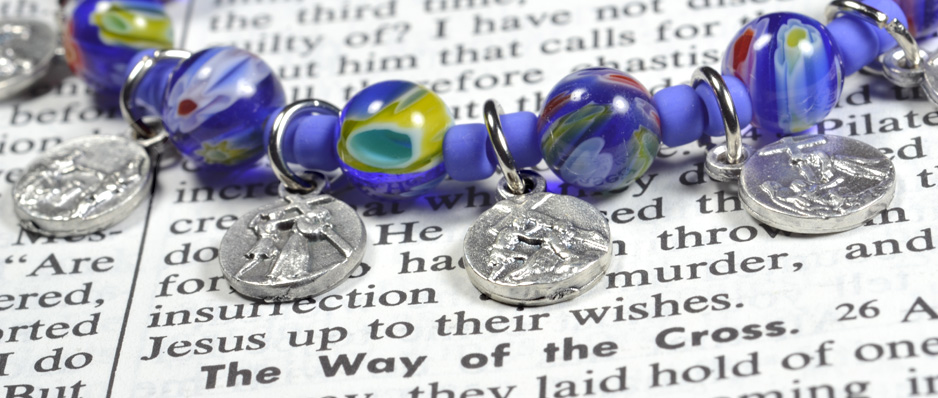Stations of the Cross
One of my favorite memories of Catholic elementary school was going to The Stations of the Cross. Favorite may be the wrong word because it was there that the reality of Jesus' final hours began to penetrate through my childish brain. Horror, shame, anger and sadness are probably better descriptions of how I felt walking away from praying The Stations. From that starting point I've found the stations, coupled with meditations that touch on modern living, can bring me to some honest assessments about myself.
Standing surrounded by Jesus' journey to the cross seems to strip away all that junk I hide behind and face the good and bad truths about myself. The profound sacrifice of Jesus shames my selfishness but encourages me to be less so. The mercy He shows in The Stations opens my shame up to His forgiveness and calls me to be merciful in my life. By embracing his suffering he's shown me that there can be a prayerful purpose in the suffering of loved ones and my own.
People were moved to walk the Way of the Cross soon after he left us. Tradition holds that Mary visited daily the scenes of His passion. It became a place of pilgrimage to walk in his footsteps. By the 5th century reproductions of holy places were being made for people who could not go to the Holy Land. Around 1462 an English pilgrim, William Wey, is said to have coined the term "stations" and described following a path from Pilate's house to Calvary.
As the invasion of the Moslem Turks blocked access to the Holy Land the practice of walking the Way of the Cross was spread by putting reproductions of the Stations in popular spiritual areas in Europe. By the end of the 17th century it was becoming common to erect stations in churches. In 1731 Pope Clement XII permitted stations to be put in all churches and set the number at 14. Up until then the number of stations varied. Eleven years later Pope Benedict XIV asked all priests to erect the Way of the Cross in their churches.
I share this devotion with a long line of faithful stretching all the way back to Mary and the first followers of Jesus. A walk of anguish and sorrow that leads to the sweet promise of the Resurrection.
Blessings, Carolyn


